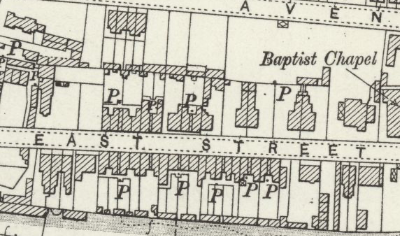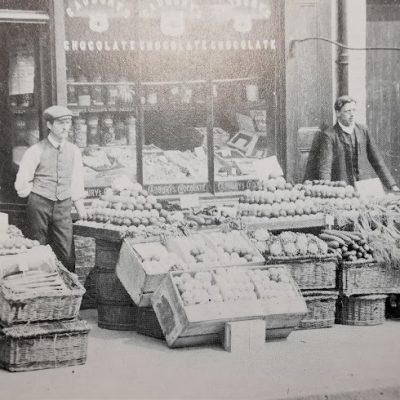Search by topic
- archaeology
- Building of Local Interest
- charity
- church
- crime
- dressmaker
- fire
- Great Eastern Railway
- Listed building
- Mapping Relief
- medieval
- oral history
- poverty
- Public House
- Rattee & Kett
- Religious House
- Roman
- scholar
- school
- Then and Now
- tudor
- women
- work
- world war one
- world war two
Search by text
18 Norfolk Street
History of 18 Norfolk Street
1898
Cambridge Chronicle 20.5.1898
CAMBRIDGE MONDAY. (Before W. B. Redfern, Esq., in the chair, Macintosh, G. Smith, and P. Spalding, Esqs.) Italian Organ Grinders.—Marie Dagastino, 36, and Emilia Cozzi, 20, organ grinders, of 18, Norfolk Street, were charged on warrant with stealing two piano organs, value £34, the property of Pietro Antonio Dagastino, on March 31st. Also with stealing a quantity of towels and jewellery, value £9. —Mr. J. Weaver Burnard, of London, appeared for the defendants, and Mr. O. Papworth prosecuted.— Roinnolo Giordano, 4, Beaconsfield Terrace, Victoria Road, acted as interpreter.—Pietro Antonio Dagastino, of 81, Fitzroy Street, said he married the female defendant about eleven years ago. She had then no property of her own. Shortly after their marriage they went to Croydon. They lived together until a week before Christmas of Iast year and were engaged in grinding organs and selling ice cream. About that time he went to Scotland to extend his ice cream business, leaving his wife at Croydon to look after his possessions, which included two piano organs, three ice cream barrows, towels, sheets, and jewellery (produced), and also a donkey. From Scotland he sent her word to realise the effects and bring the proceeds to him for the new business. Soon afterwards he received information from his mother-in-law that his wife had left the neigbourhood of Croydon some weeks. He went to London tho previous Friday, but did not find his wife or property. He found a letter, however, bearing a Cambridge post-mark and signed “Cozzi Emilia.” — A translation of the letter by the Rev. Canon Scott was read to Court. — witness, continuing, said he came to Cambridge on Saturday last with his mother-in-law, and gave information of the loss of his property at the Police Station through the agency of an Italian who could speak English. He had since been taken to Norfolk Street and shown two piano organs, ice cream barrow, and some jewellery, all of which he identified as his property. Cross-examined by Mr. Burnard, witness denied deserting his wife or agreeing to separate. He went to the Italian Consul two years ago about his wile. On that occasion he settled some land in Italy on her and did not give her two piano organs. They had been procured through a society and he had made monthly payments. The receipts were made out in his own name. Before going to Scotland he had never threatened to kill his wife if she did not give him money. He had asked her for money and she had given him £12. He’d never assaulted her.— Antonio Valenti, mother of the female prisoner, said prosecutor left her and her daughter a week before Christmas. About March 21st her daughter Ieft, taking the two piano organs, the ice-cream barrow, and other things belonging to her. Leonardo Fremardano, 81 Fitzroy Street, deposed that had formerly lived with prosecutor and his wife at Croydon. On March 21st the female prisoner and himself left and took the two piano organs and an ice-cream barrow. They came to Cambridge and he lived with the prisoners for some time, but left them because they did not pay him. — Giovanni Monitano, 81, Fitzroy Street, said he had lived with prosecutor and his wife at Croydon, and had helped the female prisoner to take the two organs and a barrow to the Station. Guiseppo Persergino, lodging in a cottage adjoining the ” Compasses,” East Road, said he saw Cozzi for the first time on Friday last. Prisoner offered him organ for £7 10s, but witness did not buy It.— Antonie Russo, 81, Fitzroy Street, said he knew both prisoners. Cozzi had offered him one of the organs in question for sale, but witness did not buy it. —Detective-Sergt. Marsh said he knew both prisoners. On Saturday last be arrested them on a warrant at 48 [sic], Norfolk Street. The female prisoner said “They are as much mine as his.” She produced two receipts in her own name for organs. In reply to a question as to whether she had a receipt for the ice-cream barrow she said “No, that is nothing to with me.” He asked where the organs were and Cozzi said one was in the town and the other the country. They were then taken to the Police Station and witness, Detective-Constable White, and prosecutor, went to Norfolk Street and in a shed at the back found the ice cream barrow freshly painted with Cozzi’s name on it. Afterwards in a yard, hired by Cozzi, at the back of 20, Norfolk Street, they found one of the organs without a handle. They also found another the “Horse and Groom,” East Road, which prosecutor had identified.— Prisoners pleaded not guilty and were committed for trial at the Quarter Sessions.—Bail was granted in one surety of £10 each (Canon Scott being surety) and the prisoners in £10 each.
The following article is a fascinating article by Professor Richard Holton, Univ. of Cambridge, into the background of the article reproduced above and the context of Italian immigration to England.
The Cambridge Barrel Organ case
1901
George H Goode, 30, sugar boxer, b Cambridge
Elizabeth A, 30, b Cambs
George W, 5, b Scotland
Alfred, 3, b Cambridge
Alexander, 1, b Cambridge
1913
George H Goode, confectioner
1939
George Goode, b 1895, grocery warehouseman
Annie, b 1895
Ronald, b 1921, garage hand
Dennis, b 1925, laboratory assistant
?
Pauline, b 1933
Contribute
Do you have any information about the people or places in this article? If so, then please let us know using the Contact page or by emailing capturingcambridge@
License
This work is licensed under CC BY-NC-SA 4.0








